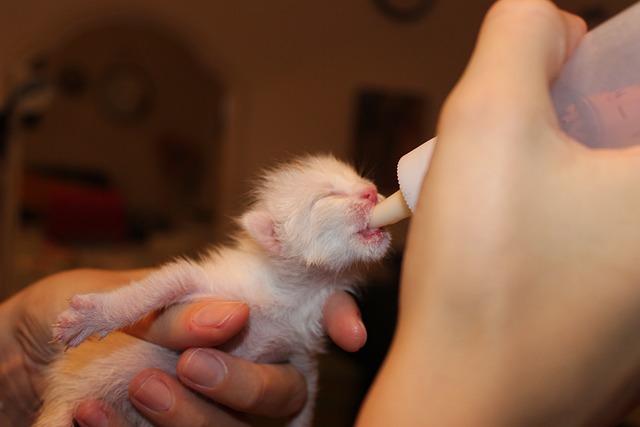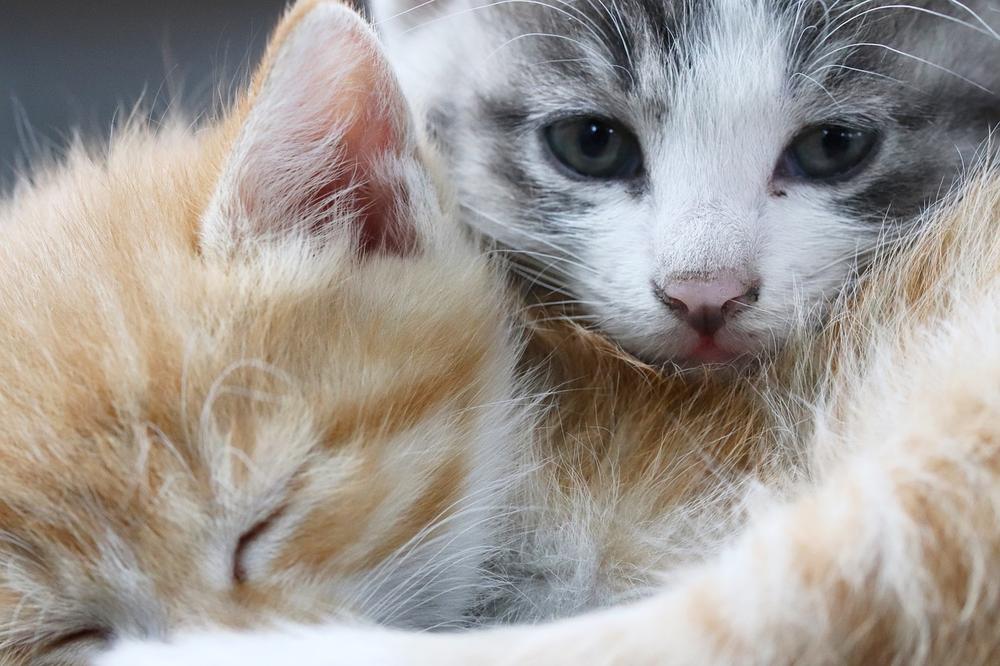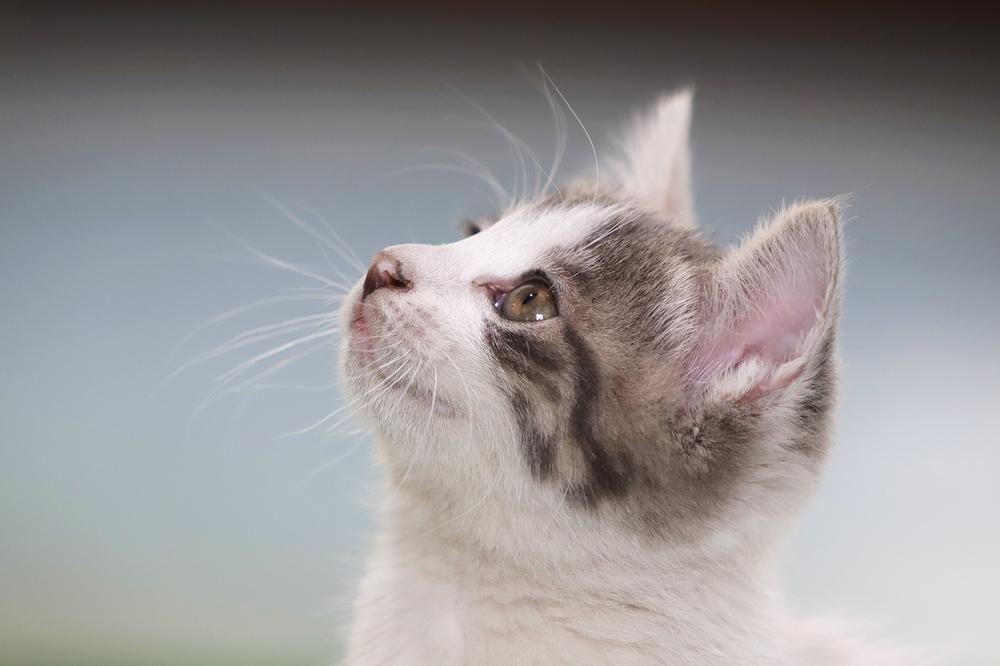How to Bottle-Feed a Newborn Kitten (That Won't Normally Eat)

Can I be honest with you?
Your heart sinks when you see that little bundle of fur turning away from the bottle, refusing to eat. 😞
It's like watching a ship sink, your hopes and dreams fading with each rejected feeding.
But let's not dwell on the heartache, because the consequences are far worse.
A hungry kitten only leads to worry, guilt, and sleepless nights.
Don't let that happen to you.
In today's guide, we'll give you the solution you need.
So, let's get started, shall we?
How to Bottle Feed a Kitten
Gradually introduce the bottle to the kitten
When feeding a baby kitten with a bottle, take it slow and give them time to get used to it.
Don't rush or overwhelm them.
Let the kitten smell and lick the nipple first. Then gently help them open their mouth and have a little bit of formula.
Keep the kitten warm and stimulated during feedings
Just like human babies, young kittens may have trouble eating on their own sometimes.
Make sure the kitten stays warm while you're feeding them.
You can use a special heating pad made for pets to keep their body temperature right and make them comfortable.
Also, before or after each feeding, give the kitten a gentle rub on their belly, genital area, and butt to help them go to the bathroom.
It's not the most glamorous part of taking care of a kitten, but it's important for their health!
Provide physical and emotional contact
Feeding time isn't just about giving them food.
It's also a chance for you to cuddle and show love to the kittens.
While you're feeding them, pet them gently and hold them close.
This makes them feel safe and cared for.
Oh, and don't forget to warm up the milk replacement before giving it to the kittens.
Just like how you wouldn't like too hot or too cold food, they won't enjoy it either. Test it on your wrist to ensure it's the perfect temperature - not too hot and not too cold.
Lastly, when you're holding the kitten during feedings, make sure to hold them on their tummy.
This helps them feel secure and relaxed so they can eat peacefully.
Main points I'll expand upon further down this article:
- Newborn kittens should start drinking milk within 24 hours of birth.
- Measure the kitten's weight and feed according to a feeding chart.
- Weigh the kitten before and after each feeding to monitor growth.
- Avoid overfeeding to prevent digestive issues.
- Supplemental bottle feeding may be necessary until they can eat independently.
- Start weaning at around 4 weeks old by offering formula on a spoon.
- Introduce litter box training when the kittens are 3-4 weeks old.
- Feed newborn kittens every 2-3 hours, 2-3-week-old kittens every 4-6 hours.
- Offer small amounts of solid food at around 4 weeks old.
- Contact a veterinarian if the kitten refuses to eat or shows signs of illness.
And now that you know how to bottle feed a kitten, let's explore how to create the perfect environment for feeding!
How to Bottle Feed a Kitten for the First Time?
To have a smooth and happy feeding time with your newborn kittens, you need to set the stage right.
Find a quiet and cozy spot that doesn't have any annoyances.
Dim the lights, add some calm tunes in the background.

This peaceful environment will make the kittens feel relaxed and content.
Now, here's something crucial—you must get them drinking milk within 24 hours of being born.
It's important for their growth and development.
Make sure to feed them regularly, ensuring they receive all the essential nutrients required for their tiny bodies to thrive.
How Much to Bottle Feed a Kitten
When you're bottle feeding a kitten, here's how to make sure it gets the right amount:
- Adjust how much you feed based on its weight.
- Weigh the kitten before every feeding.
- Check a chart to see how much formula it should have.
- Change the volume as the kitten gets bigger or smaller.
- Watch its weight to make sure it's developing properly.
- Aim for it to gain half an ounce each day.
- Give it the right nutrition and keep things clean.
- Don't overfeed it because that can cause tummy problems.
- Weigh the kitten each day to track its progress.
- Expect it to gain 3-4 ounces per week.
- Sometimes, you might need to use a supplemental bottle.
- Change your feeding methods as the kitten grows.
Also, remember that the kitten's needs will change as it gets older, so be flexible in adjusting its feeding routine. Follow these guidelines, and your kitten will get the nourishment it needs for healthy growth. 😺
And now, let's explore the exciting milestones in a kitten's development and how you can navigate them successfully!
How Long to Bottle Feed Kittens?
Once your little furballs start reaching certain milestones, it's time to make some changes in their feeding routine.
Here are some things you should keep an eye on:
- Watch out for those signs that your kittens are ready to transition! Look for them showing interest in exploring and solid nibbling. They might even become more independent little beings.
- Remember not to wake the kittens up during their bottle feedings. Let them doze in peace.
- This whole bottle-feeding business may go on until the kittens hit around 4 or 5 weeks old.
- At 4 weeks old, it's weaning o'clock. You can start offering formula on a spoon and slowly introduce delicious canned food.
- It's also around this time that you should master the art of litter box training—between 3 and 4 weeks is the golden age for teaching bathroom etiquette.
- Adjust the feeding frequency depending on age. Brand new newborns want a meal every 2 to 3 hours, while slightly older 2 to 3-week-old kittens can go for 4 to 6 hours between meals.
- Around 4 weeks old is when you're going to sprinkle in small portions of solid food, just enough to spark their appetite.
- As long as the kittens are still exploring the world of solid nibbling, a shallow bowl of fresh water should always be within paw's reach.
Keep an eye on these milestones, and your wee ones will grow up happy and healthy.
And let's be honest...
Trying to feed a kitten that won't eat can be incredibly worrisome.
So, how do you handle it?
How can you determine the cause and find a solution?
Let's dive into the next section and explore some practical steps to help your little furball regain their appetite:
Assess the Kitten to Learn Why They Won’t Eat
To assess why your kitten won't eat, consider these 11 important factors:
- Check for signs of teething or oral abnormalities.
- Offer softer-textured foods if sore gums or mouth discomfort are present.
- Consult a veterinarian if the kitten refuses to feed.
- Gently pull up the skin at the scruff of the neck to assess dehydration.
- Play with kittens to stimulate their minds and develop motor skills.
- Changes in appetite are normal, but lack of hunger should raise concern.
- Potential reasons for not eating include illness, congenital abnormality, or picky eating.
- Check the kitten's weight and overall development to determine age and nutritional needs.
- If the kitten doesn't have all its teeth, it is not ready for solid food.
- Consider both health and behavior when evaluating why the kitten won't eat.
- Take into account any potential hindering factors in their surroundings. Seek immediate veterinary attention if signs of illness are present.
And if you're feeling concerned about why your kitten won't eat, I completely understand.
It can be frustrating and worrisome when they refuse to take their food.
That's why I wrote my article on Can a Cat Nurse Kittens That Arent Hers.
How to Get a Kitten to Latch Onto a Bottle?
Don't worry, I've got some tips for you on getting a kitten to latch onto a bottle.
- Apply gentle pressure near the corner of the kitten's mouth with your finger or thumb. This will make the kitten want to suck and open its mouth.
- When holding the bottle, guide the kitten's head forward to reduce air intake and allow it to suckle at its own pace.
- Kittens can be picky, so try different nipple sizes and shapes until you find one that the kitten latches onto comfortably.
- Hold its head gently to encourage the kitten to latch onto the bottle. Avoid forcing it onto the nipple to prevent discomfort and resistance.
- Give the kitten some motherly love by rubbing its back or massaging its forehead. This helps relax the kitten during feeding.
- If all else fails, try using a syringe as a last resort under the guidance of a veterinarian to provide nourishment.
Patience is key when teaching a kitten to latch onto a bottle.
With time and practice, they'll catch on!
And now that you know how to get a kitten to latch onto a bottle, let's move on to creating the perfect feeding area and ensuring proper hygiene.
This is crucial for keeping your little one healthy and happy, so follow along to discover the essential steps!
Are you ready?
Let's dive in together!
What You Need to Bottle Feed a Kitten
To make sure your kitten is well-fed, here's what you need to do:
- Pick a spot just for feeding.
- Find a small surface that's easy to clean.
- Keep everything you need nearby.
- Use formula that's like what cats drink.
- Skip the cow's milk - it can upset their tummy.
- Maybe try PetAg KMR Kitten Milk Replacer Powder. 🐱
- Be extra careful about cleanliness: sterilize bottles and wash your hands.
- Change the bedding every day so it's nice and clean.
- After each feeding, clean the bottles, nipples, and the little guy's ears and eyes.
- Wash the bedding separately with some soap and bleach.
And here are a couple more tips: Choose a bottle and nipple meant for kittens.
Rub their belly after eating to help them go potty.
Remember these steps, and you'll be ready to give your kitten all the food they need.

But what happens if your kitten starts experiencing digestive issues?
Don't worry, I've got you covered!
In the next section, I'll share important tips on how to monitor their health and adjust their formula concentration if needed.
Trust me, you'll want to keep reading to ensure the best care for your bottle-fed kittens!
Side Effects of Bottle Feeding Kittens
When you're feeding kittens from a bottle, there are some things you should watch out for:
- Keep a close eye on the kittens in case they have any digestive problems like constipation or diarrhea.
- Pay attention to the texture and color of their poop as it can signal if something's wrong.
- If they haven't gone to the bathroom for a long time, there might be a blockage or another issue that needs fixing.
- Adjusting the formula concentration can help with digestion troubles.
- If you notice any weird changes or have concerns about their health or behavior, it's best to talk to a vet.
- It's really important to get professional advice from a vet so you know you're doing everything right for the kittens.
- Make sure to check their poop regularly to catch any issues early.
- Don't ignore any symptoms or worries because dealing with them quickly can stop things from getting worse.
Taking care of bottle-fed kittens means you have to stay alert and take action to keep them healthy.
And that wraps up today's article.
You've made it to the end of my blog post! I'd love to hear your thoughts. I always put in a ton of effort to make my blog posts comprehensive and helpful. It takes me quite some time, but I enjoy doing it. If you found this post valuable, I would be incredibly grateful if you could click on any of the social sharing icons to share it with others. Thank you so much!
Talk soon,
-Sarah Davis